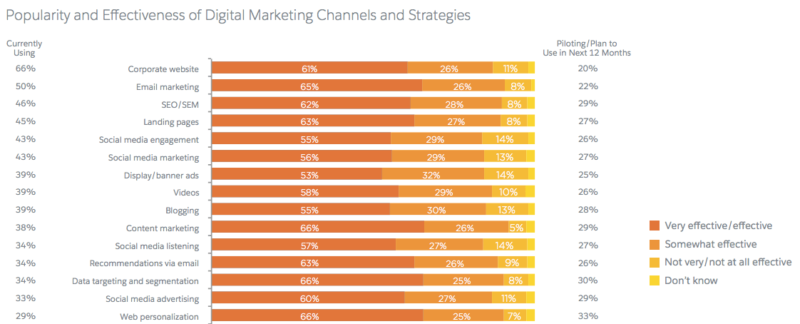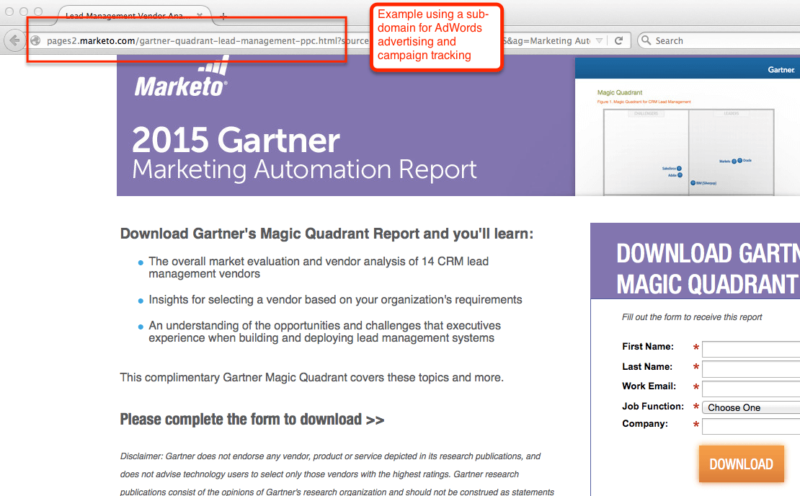How To Tie SEO With 3 Popular B2B Demand Generation Initiatives
Although organic search can be very effective at supporting demand generation efforts within B2B organizations, columnist Derek Edmond notes that SEO professionals are often left out of these conversations. Here's why they shouldn't be.
The role of demand generation in B2B marketing is to create demand for an organization’s product or solution. But it’s not just lead generation; software provider Marketo contends that demand generation “also includes the conversations and activities that occur prior to the lead being passed to sales.”
SEO professionals should not be left out of the demand generation conversation happening in B2B organizations. It is easy for this to happen, since there is often a misconception that SEO is primarily about keyword performance (i.e., search engine rankings) and early-stage traffic acquisition.
In fact, organic search traffic can represent a key channel for demand generation teams to leverage and demonstrate performance, regardless of a prospect’s place in the buying cycle.

Top Digital Marketing Channels via Salesforce Report
Here are a few examples of where we find SEO performance being overlooked by demand generation marketers, and what you can do differently in your situation.
Landing Pages On Subdomains
One of the most common oversights we experience is demand generation landing pages being housed solely on subdomains of the website. While these assets can work great for conversion-oriented marketers, they provide little to no value for organic search performance because they are not technically part of the primary website.

Landing Page Example via AdWords Advertising
In an ideal situation, these landing pages would actually reside on the primary website, housed within a resource center or some other related location. Check out examples of this idea in action here and here.
That said, it is difficult to win the argument when lead generation and conversion optimization are key objectives; as such, SEO professionals need to compromise a bit.
In cases like this, my recommendation is to determine a time frame when landing pages can be transitioned from the demand generation location to a destination on the main website. Most marketing automation solutions used for these initiatives have embeddable form capabilities so that lead capture can still be maintained.
This is a win-win for SEOs and demand generation marketers, since these pages can still be used to acquire leads but also have a potential impact on organic keyword visibility.
Here are resources for embedding forms from a few popular marketing automation solutions:
SEO best practices should certainly be applied (keyword strategy, tagging, cross-linking and so on), and don’t forget to 301 redirect the original landing page to its new destination once completed. Too often, we find broken third-party links pointing to retired landing pages that were not transitioned.
Here is the follow-up example based on the previous vendor, illustrating the integration of an archived demand generation asset within the main website. Note the integration of calls to action, social share functionality and cross-links to related assets.

Example of the integrated demand generation asset
Time-Sensitive Campaigns
Another reason demand generation marketers ignore SEO is the time-sensitive nature of certain campaigns. While it can be true that SEO may have minimal impact on a campaign with a shorter shelf-life or built under very strict deadlines, there are more long-term opportunities to consider.
First, consider the opportunity to follow up these campaigns with related content marketing assets after the fact.
In one example, we leveraged material found after the launch of a time-sensitive campaign to publish a series of follow-up blog posts highlighting and revisiting key announcements and media. Content from this initiative has led to hundreds of social shares, dozens of inbound links and positive impact for a range of keyword targets.
Second, collect publisher information from links and mentions organically acquired during the initiative. These contacts can potentially be utilized for follow-up communications and outreach when new, related material is developed in the future.
A couple of years ago, we missed out on the publication of one of our clients’ semi-annual research reports. That said, we used a combination of BuzzSumo and Mention to research the publications that covered the report organically.
During the organization’s next launch, we had a list of more than 30 publications to reach out to for link acquisition and content marketing development.
Conferences & Events
Industry events, trade show booth participation and other event-related marketing initiatives can be stressful for demand generation teams. The operation and success of these initiatives involves a high degree of financial investment and personal time.
Since they are not typically “online,” as well, SEO is one of the last things demand generation marketers may think of. It’s a missed opportunity for SEO teams to not get involved.
We have had a good degree of success tying our SEO-centric content marketing initiatives with organizational events and industry conferences. Here are a few ideas to consider:
- Interviews with sales personnel to better understand customer pain points and areas of content marketing development lacking in online marketing initiatives.
- Interviews with industry partners and organizations designed to build out content marketing programs, both on-site and through third-party byline contribution (i.e., link building). Check out my colleague Stacy Thompson’s recent article covering ideas for developing a content interview initiative.
- Networking with industry professionals active in social media platforms. Events are a great way to connect in real life and establish more direct connections.
An SEO professional’s involvement in event marketing provides a way to better understand the sales process from an industry level and even get a direct sense of competitive offerings and positioning.
As I indicated in a previous column, our participation in one industry event performing interviews and outreach led to enough material to publish 10 comprehensive and collaborative posts, which in turn drove dozens of links and social mentions for our clients.
Final Thoughts
Demand generation is critical component of the B2B marketing mix. SEO professionals need to involve themselves in all facets of the demand generation process, in an effort to tie in SEO tactics and improve overall marketing performance.
Is the SEO team in your organization actively participating in demand generation initiatives? I would love to read your perspective via social channels.
Contributing authors are invited to create content for Search Engine Land and are chosen for their expertise and contribution to the search community. Our contributors work under the oversight of the editorial staff and contributions are checked for quality and relevance to our readers. The opinions they express are their own.
Related stories
